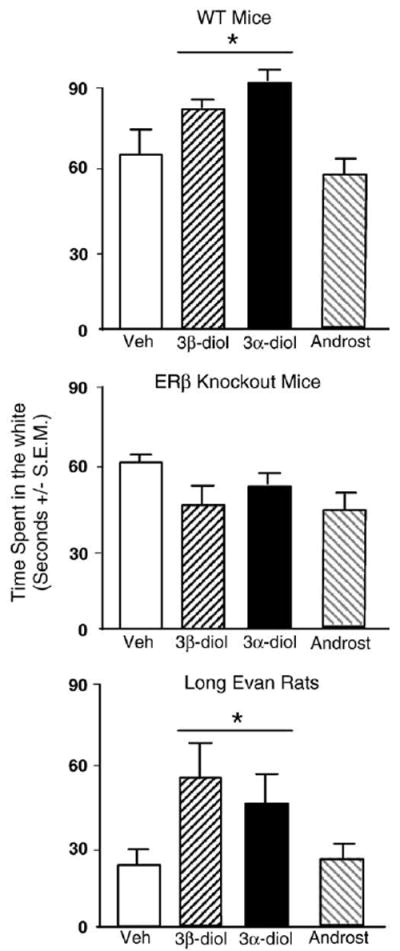Fig. 3.

Represents mean time spent on the light side in the light–dark task for: wildtype (WT) mice (top) administered acute vehicle control (white bar; n=15), 3β-diol (horizontally-striped bar; n=11), 3α-diol (black bar; n=13), or androsterone (androst; gray-stripe bar; n=12); and to ERβ receptor knockout (βERKO) mice (middle) administered acute vehicle control (white bar; n=21), 3β-diol (horizontally-striped bar; n=34), 3α-diol (black bar; n=34), or androsterone (androst; gray-stripe bar; n=29); and to rats (bottom) administered vehicle control (white bar; n=22), 3β-diol (horizontally-striped bar; n=26), 3α-diol (black bar; n=25), or androsterone (androst; gray-stripe bar; n=25). Rats andWT, but not βERKO, mice administered 3α-diol or 3β-diol displayed significantly less anxiety-like behavior than those that received vehicle or androsterone. * denotes significant difference (p<0.05).
